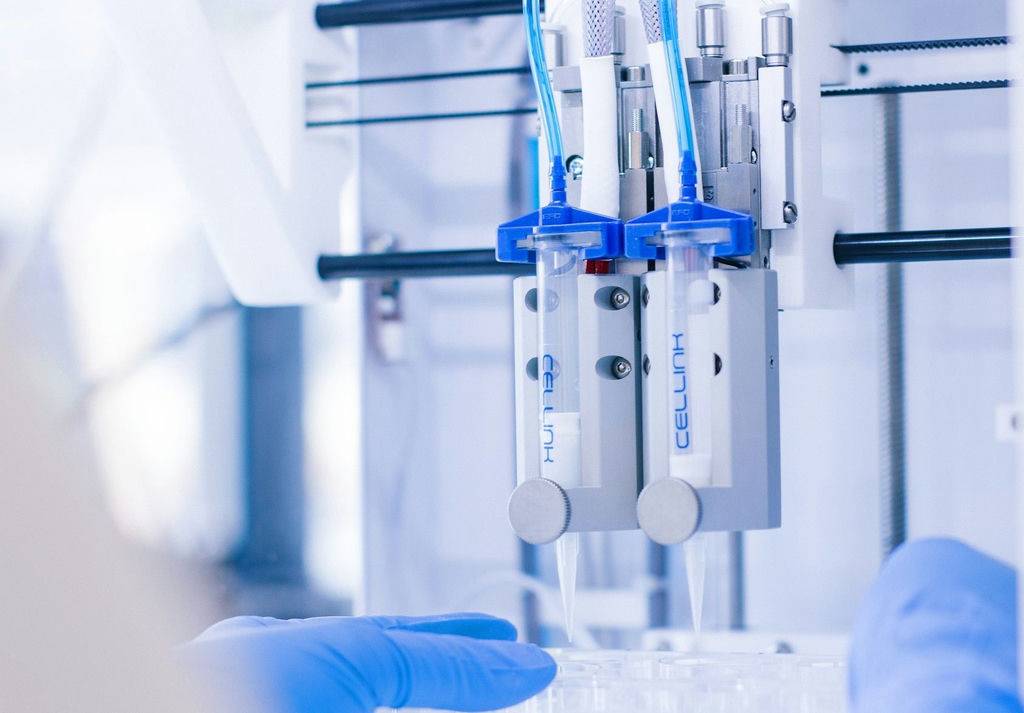3D BioPrinting new skin to heal scars or damaged tissue is no longer a trope of science fiction, but part of a new wave of medtech.
Ever since 3D printing became a reality, the idea that human tissue could be printed – like we would print our boarding pass for a flight – has fascinated engineers and biologists alike. From a practical sense, it could allow for tissue production in a place as small as a local doctor’s office, but in an even more science-fiction-like way it was seen by some as a tool in the drive for transhumanism.
Organs with microchip implants and printing functioning human hearts to bypass donor lists are among some of the possibilities talked about in this field. The technology is still a while from achieving these heights in 2020, but not as much as you might think.
One of the most high-profile companies working in this space is Cellink. Founded four years ago by 31-year-old entrepreneur Erik Gatenholm, the company’s 2017 IPO was one of the fastest on record and it just recently achieved a $1bn valuation.
While starting off as a developer of ‘bioink’ for 3D bioprinters– a natural or synthetic polymer selected for its biocompatible components – the company went on to build its own bioprinter starting at around $5,000 in price. By comparison, other 3D bioprinters at the time were upwards of $300,000 each.
Noticing that there was an underdeveloped market in bioink four years ago – despite there being early-stage, large manufacturers of bioprinters – Gatenholm and two colleagues stumbled upon a material developed at Chalmers University of Technology in Sweden. This material, he said, was an ideal culturing environment for cells and eventually found a way to use it as bioprinting filament.
Democratising an industry
Gatenholm said that the early days of Cellink showed that despite there being a lot of interest in bioprinting, convincing partner companies to come on board and buy into bioink was a major challenge.
“The problem at that point was that the printers were so expensive,” he said. “So if you wanted to get into bioprinting, you had to pay, like $200,000. Quite frankly, not many laboratories around the world have that type of funding for a very, very innovative application.
“So we decided to democratise the entire industry and we came out with a printer that that costs $5,000. And that really changed everything for scientists because, all of a sudden, you had hundreds of laboratories around the world that had heard about bioprinting, but they just didn’t have the funding.”
Behind this driving down in cost, he added, was a revolution underway among more established 3D-printing companies such as MakerBot and Ultimaker, which were producing cheaper printers using more affordable components and more efficient resolution software. Using their platforms, Cellink looked to replicate this shift in the bioprinting world.
Role in Covid-19 research
Right now, Cellink’s bioprinting products are used by about 1,800 labs worldwide, many of which are working in basic applied research that could be the first step of many towards future bioprinting breakthroughs.
More recently, the company was included as part of a European research consortium called Triankle, which aims to develop regenerative therapies in the form of 3D-printed implants for the regeneration of ankle joint tissues. The €5.9m project has some high-profile partners, including footballing giant FC Barcelona.
But perhaps most pressing, bioprinting has become a new tool in research efforts to understand how Covid-19 impacts the human body. Gatenholm said that while 3D printing has proven itself to be “very, very useful” during the pandemic for the production of nasal swabs and other testing kits, bioprinting is a more complicated process.
One area, however, where Gatenholm has seen bioprinting really take off during this pandemic is in the printing of parts of lung tissue. By growing basic versions identical to normal human lungs, researchers can better understand in the lab how Covid-19 impacts their function.
“We have a few collaborators and customers who are working on [this area of research] specifically,” Gatenholm said. “The Technical University of Berlin is doing work with lung tissue specifically, and also looking into how they can apply that model for Covid-19 research.”
Bioprinting in space
In the future, with hopes that Cellink’s bioprinters could one day make it into the offices of doctors across the world, Gatenholm sees the area of personalised medicine as a point where his industry could really take off. Already, researchers are exploring the potential for technologies such as the gene-editing tool CRISPR-Cas9 within bioprinting.
Not only that, but bioprinting is already making headway in space. As recently reported, two 3D bioprinting systems have already made the journey to the International Space Station to better understand how the technology works in microgravity.
So far, it has been found that bioprinting tissue in space has some advantages over that on Earth – noticeably that it’s possible to create more intricate and complex structures. If humans are to live on the moon and further into the solar system, personalised bioprinting could be crucial when you find yourself millions of kilometres from the nearest doctor.
“Personalised medicine is an area that we’re very active in,” Gatenholm said, “whether that’s printing single cells that can be sequenced for patient-specific cancer cells or if it’s printing patient-specific cancer tumours that can then be used for developing new drugs and treatments. Personaliaing the medical aspect; that’s going to be for the future.”
Article Credit: Siliconrepublic.com


